Interviews with Experts
7 Key Strategies for Effective Pest and Disease Management in Urban Trees
When it comes to managing pests and diseases in urban trees, you need to be proactive and strategic. Identifying potential threats, implementing integrated pest management techniques, and utilizing natural predators are just a few of the key strategies that can make a significant difference in the health and longevity of urban trees.
But there’s one critical aspect that ties all these strategies together, and it’s often overlooked. Understanding and addressing this aspect is crucial for effective pest and disease management in urban trees.
Key Takeaways
- Regularly monitor and inspect urban trees for signs of pests and diseases, such as abnormal leaf appearance, bark damage, or wilting.
- Focus on prevention methods, such as maintaining tree health, promoting biodiversity, and implementing proactive strategies to minimize risks.
- Utilize integrated pest management (IPM) techniques, including the use of biological controls and early detection and intervention.
- Implement proper planting and maintenance techniques, such as selecting resistant tree species, pruning dead or diseased branches, and promoting good air circulation.
Identification
Identify potential pests and diseases in urban trees by closely examining the leaves, bark, and overall health of the tree for any signs of abnormality. Look for unusual spots, discoloration, or holes in the leaves, as these could indicate the presence of pests or diseases.
Additionally, inspect the bark for any signs of cracking, oozing, or unusual growth. Check for any early leaf drop, wilting, or stunted growth, as these could be signs of an underlying issue.
It’s crucial to stay vigilant and regularly monitor the trees for any changes in their appearance or behavior.
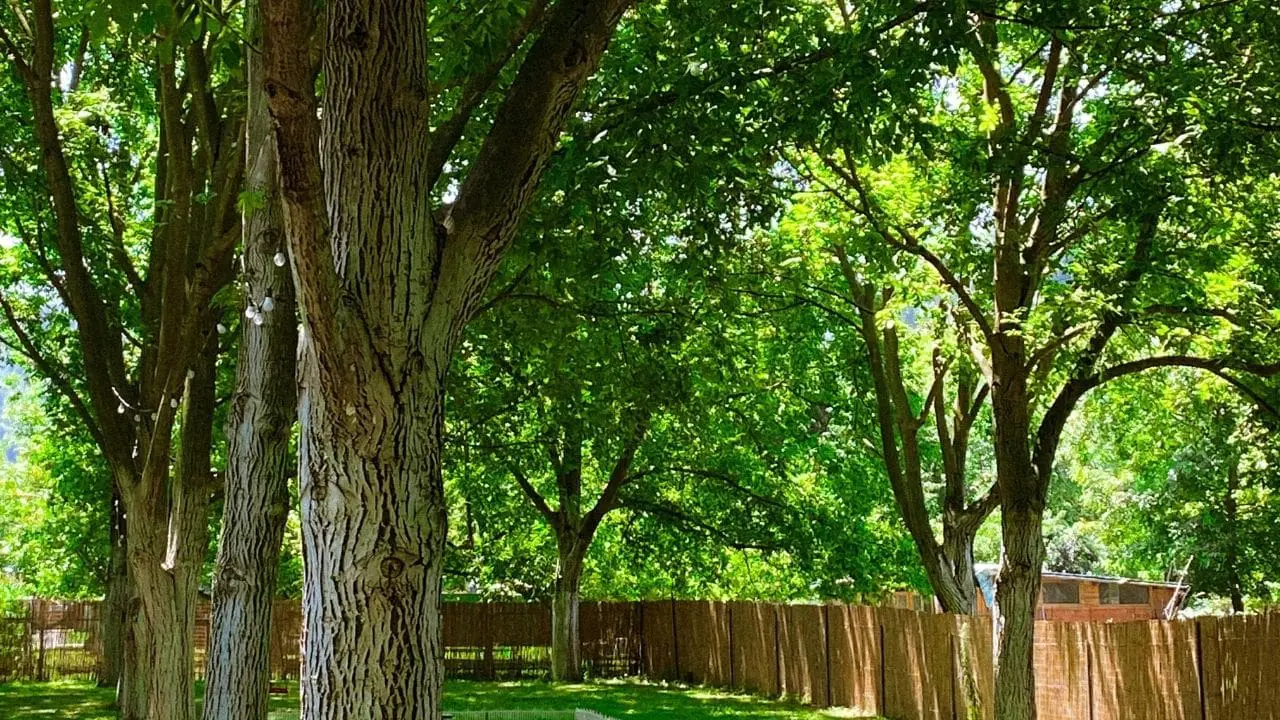
Integrated Pest Management
Now, let’s talk about Integrated Pest Management (IPM) for urban trees.
You should focus on prevention methods, such as maintaining tree health and promoting biodiversity.
Monitoring and scouting for pests and diseases is crucial for early detection and intervention.
Utilizing biological controls, like natural enemies of pests, can also play a key role in managing urban tree pests and diseases.
Prevention Methods
To effectively manage pests and diseases in urban trees, it’s essential to implement prevention methods through integrated pest management, which focuses on proactive strategies to minimize risks and maintain tree health.
Start by selecting tree species that are well-suited to the local environment and resistant to prevalent pests and diseases.
Proper planting and mulching techniques, along with regular watering and fertilization, help maintain tree vigor and resilience.
Pruning dead or diseased branches and promoting good air circulation around the tree canopy reduces the risk of infestations.
Regular inspection for early signs of pests or diseases enables prompt intervention.
Additionally, promoting biodiversity in the urban landscape can help control pest populations naturally.
Monitoring and Scouting
Monitoring and scouting for early signs of pests and diseases is crucial for effectively implementing integrated pest management in urban tree care. Regularly inspect trees for any visible symptoms such as leaf discoloration, wilting, or unusual patterns of leaf drop. Pay close attention to the presence of pests or their eggs, as well as any signs of fungal or bacterial infections.
Use binoculars to inspect the upper canopy for any early signs of infestation. Additionally, consider using pheromone traps to monitor insect populations. Keep detailed records of your observations, including the location, tree species, and any environmental conditions that may contribute to pest or disease development.
Early detection enables prompt intervention, reducing the need for extensive treatments and safeguarding the health of urban trees.
Biological Controls
Regularly inspecting trees for visible symptoms and monitoring pest and disease activity provides valuable data for implementing biological controls as part of an integrated pest management strategy in urban tree care.
When choosing biological controls, consider using natural predators, parasites, or pathogens to manage pest populations. Predatory insects such as ladybugs and lacewings can be introduced to control aphids and other small insect pests. Additionally, microscopic organisms like nematodes and certain fungi are effective in controlling soil-dwelling pests and diseases.
Encouraging biodiversity in the urban tree environment also supports natural biological control by attracting beneficial insects and birds.
It’s essential to carefully select and apply biological controls to minimize any potential risks to non-target organisms and to ensure the safety of the overall tree ecosystem.
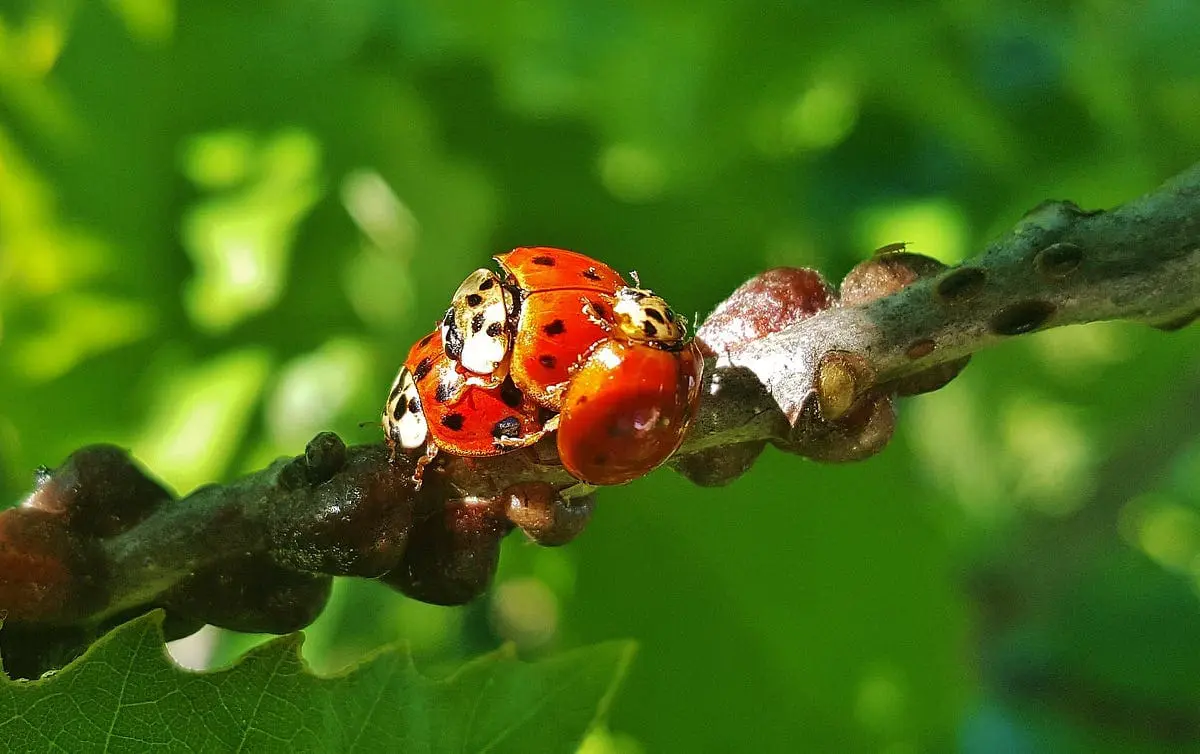
Natural Predators
You can take advantage of beneficial insects and bird predators to naturally manage pests and diseases in urban trees. Introducing ladybugs, lacewings, and parasitic wasps can help control aphids, caterpillars, and other common tree pests.
Additionally, encouraging bird populations through the provision of birdhouses and feeders can help keep insect populations in check.
Beneficial Insects
Encourage the presence of natural predators, such as ladybugs and lacewings, to help control pest populations in urban trees. Beneficial insects play a crucial role in maintaining a healthy balance within urban tree ecosystems.
Here are some practical steps to attract and support these natural predators:
- Plant a diverse range of flowering plants, such as dill, fennel, and yarrow, to provide nectar and pollen for adult beneficial insects.
- Minimize the use of broad-spectrum insecticides, as they can harm beneficial insects along with pests.
- Consider introducing specific beneficial insects, like predatory mites or parasitic wasps, to target and control particular pest species in a safe and targeted manner.
Bird Predators
To further bolster the natural pest control mechanisms in urban tree ecosystems, consider the role of bird predators in managing pest populations. Birds such as chickadees, nuthatches, and warblers are natural pest controllers, feeding on insects that can cause harm to trees. Encouraging a diverse bird population in urban areas can help control pest outbreaks effectively.
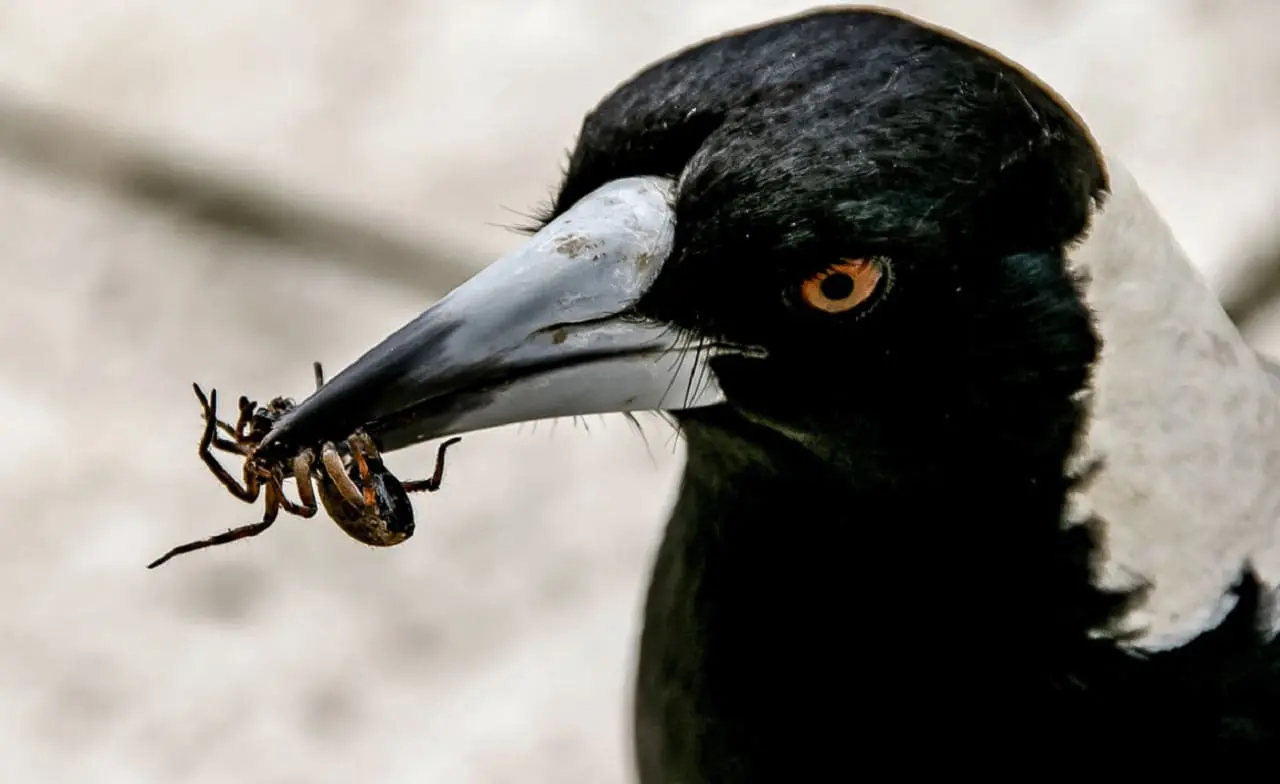
To attract bird predators, incorporate bird-friendly features into the urban tree environment, such as providing bird feeders, birdhouses, and water sources. Additionally, planting native trees and shrubs that produce berries or seeds can attract birds that feed on insects.
Ensure that the use of pesticides is minimal, as it can harm bird predators and disrupt the natural balance.
Chemical Treatments
When considering chemical treatments for pest and disease management in urban trees, it’s essential to prioritize environmentally friendly and targeted solutions to minimize impact on beneficial organisms and overall ecosystem health.
Here are some key strategies for effective chemical treatments:
- Integrated Pest Management (IPM): Implement an IPM approach that focuses on using chemical treatments only when necessary and in combination with other pest management strategies such as biological control and monitoring.
- Selective Application: Utilize targeted application methods to minimize the spread of chemicals in the environment. This includes using trunk injections or soil drenches to deliver treatments directly to the affected trees, reducing the risk of exposure to non-target organisms.
- Environmentally Friendly Products: Choose chemical treatments that are specifically designed to pose minimal risk to non-target organisms and the surrounding ecosystem. Look for products with a low environmental impact and a short half-life to ensure they break down quickly and minimize residual effects.
Fungal Diseases
For effective management of fungal diseases in urban trees, it’s crucial to promptly identify symptoms and assess the extent of infestation to determine appropriate treatment strategies. Fungal diseases can cause significant damage to urban trees if not addressed promptly and effectively. Common symptoms of fungal diseases in trees include wilting, discoloration of leaves, cankers on the trunk, and unusual growth patterns. It’s essential to monitor the health of urban trees regularly and be vigilant for any signs of fungal infestation.
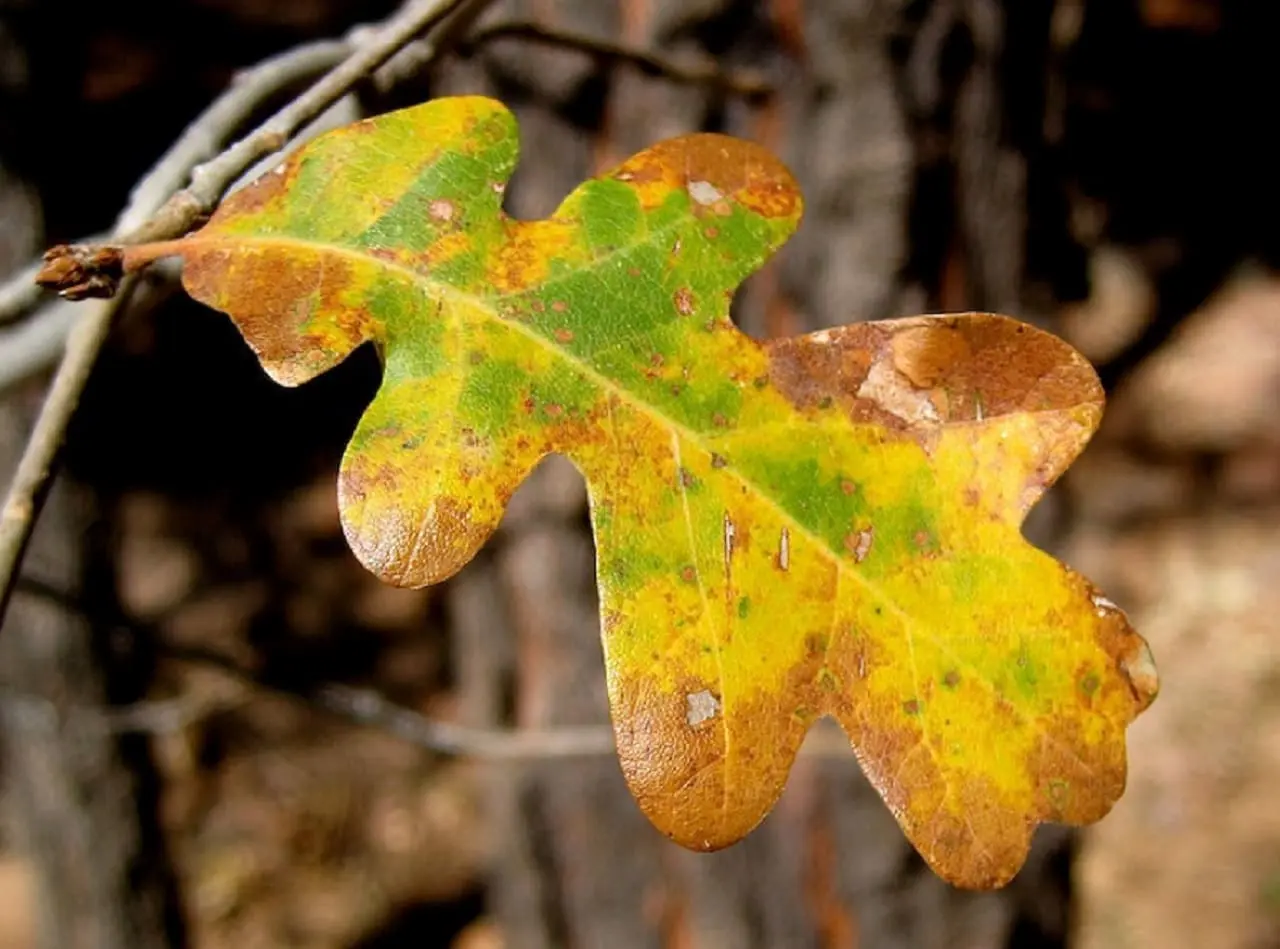
Once symptoms are identified, it’s important to take immediate action. Pruning infected branches, improving air circulation around the tree, and maintaining proper tree nutrition can help prevent the spread of fungal diseases. In severe cases, antifungal treatments may be necessary to eliminate the infection and protect the tree from further damage.
Furthermore, promoting overall tree health through proper watering, mulching, and avoiding physical damage to the tree can help prevent fungal diseases from taking hold. It’s also advisable to consult with a certified arborist or tree care professional to accurately diagnose the issue and determine the most effective treatment plan for managing fungal diseases in urban trees.
Bacterial Infections
Identifying symptoms and promptly assessing the extent of infestation is crucial for effectively managing bacterial infections in urban trees. Bacterial infections can quickly spread and cause significant damage if not addressed promptly.
Here are some key strategies for managing bacterial infections in urban trees:
- Regular Inspection: Conduct routine inspections of urban trees to identify any signs of bacterial infections such as wilting, leaf spots, or oozing sap. Early detection can help prevent the spread of the infection to other trees.
- Pruning and Sanitation: Prune and remove infected branches or areas of the tree to prevent the spread of bacteria. It’s important to properly dispose of the infected plant material to prevent further contamination.
- Promote Tree Health: Maintain the overall health of urban trees through proper watering, fertilization, and mulching. Healthy trees are more resistant to bacterial infections and can recover more effectively if infected.
Insect Infestations
To effectively manage insect infestations in urban trees, promptly assessing the extent of infestation and identifying the specific pests present is crucial. Begin by closely inspecting the tree for signs of infestation such as abnormal leaf discoloration, wilting, or unusual holes in the bark. Look for the presence of pests, such as aphids, caterpillars, or beetles, and note their numbers and location. Once you have identified the specific pests, research their behavior and life cycle to determine the most effective treatment methods.
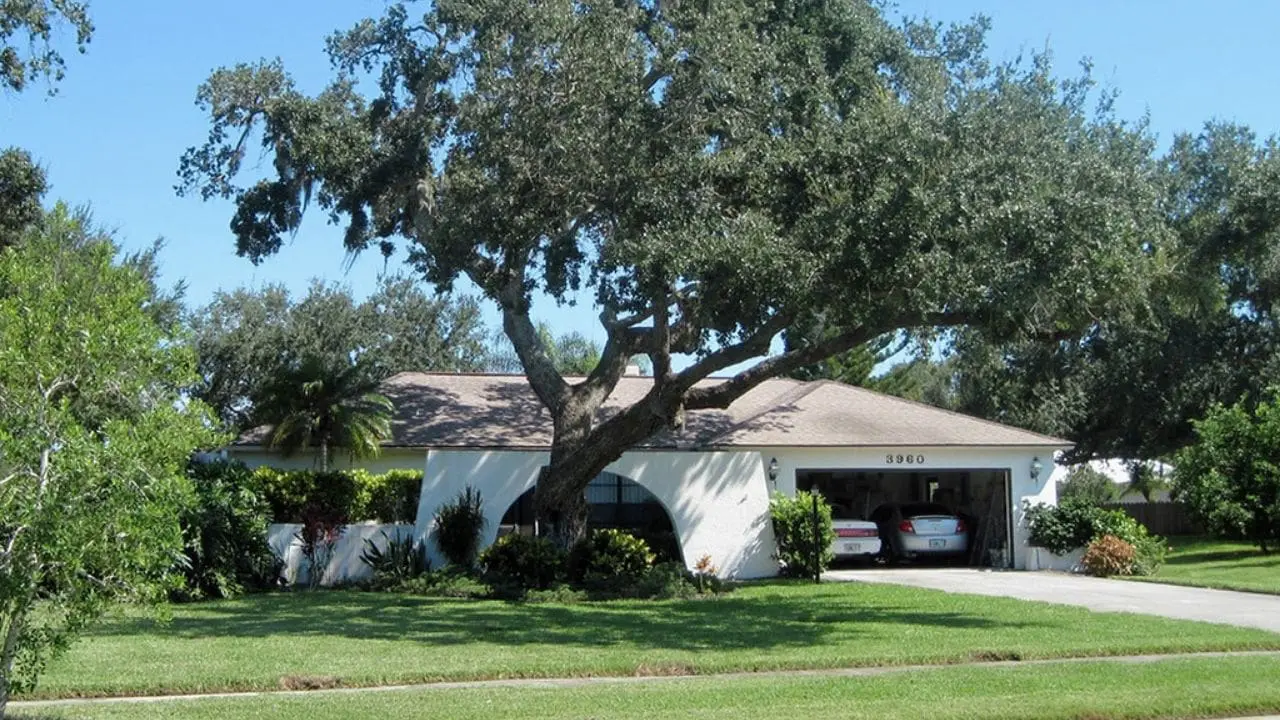
In some cases, introducing natural predators or parasites of the pests may be a viable option. Consider implementing preventive measures such as applying insecticidal soaps or horticultural oils to deter infestations. Pruning and removing infested branches can also help contain the spread of pests. Utilize barriers like sticky bands or insect nets to prevent pests from reaching the tree.
It’s essential to monitor the tree regularly for any signs of reinfestation and adjust your management strategies accordingly. By taking these proactive measures, you can effectively mitigate insect infestations and preserve the health of urban trees.
Frequently Asked Questions
How to choose the right tree species for a specific location?
Choosing the right tree species involves considering the local climate, soil conditions, available space, and intended purpose (e.g., shade, ornamental, fruit-bearing). It’s also important to select trees that are resistant to local pests and diseases. Consulting with a local arborist or tree care professional can help ensure the right species selection for long-term success.
How can soil quality affect tree health?
Soil quality plays a crucial role in tree health. Poor soil conditions, such as compacted soil, insufficient nutrients, or improper pH levels, can limit root growth, reduce nutrient uptake, and stress the tree, making it more susceptible to disease and pests. Regular soil testing and amendments can help maintain optimal soil conditions for tree health.
What role does proper irrigation play in tree health?
Proper irrigation is essential for maintaining tree health, particularly for young trees. Adequate water is crucial for root establishment, nutrient uptake, and overall growth. Over-watering and under-watering can both stress trees, making them more susceptible to disease and pests. The key is to maintain a consistent moisture level in the soil.
How do you properly plant a tree?
Proper tree planting involves selecting the right location, ensuring the planting hole is the correct depth and width, gently spreading the roots, backfilling the soil without over-compacting, watering thoroughly, and applying mulch around the base. Choosing the right tree species for the specific site conditions is also crucial.
Can improper pruning harm trees?
Yes, improper pruning can cause significant harm to trees. Incorrect cuts can lead to pest infestations, disease, and structural weaknesses. It’s essential to understand proper pruning techniques, such as making clean cuts and avoiding topping, to support healthy tree growth.
How often should trees be watered?
Watering frequency for trees depends on their age, species, and the climate. Newly planted trees require more frequent watering, typically once a week, to establish their roots. Mature trees generally need less frequent watering. During dry periods or drought, watering every two to four weeks may be necessary. Always check the soil moisture level to guide your watering schedule.
What is air spading, and how does it benefit trees?
Air spading is a process that uses compressed air to gently remove soil around a tree’s roots, allowing for inspection, aeration, and root pruning without causing damage. This technique can improve soil conditions, enhance root growth, and help address root-related issues such as girdling roots.
Statistics
- 80% of a tree’s root system is located in the top 18 inches of soil, making surface soil quality crucial for tree health.
- A study found that regular pruning can reduce the risk of storm damage to trees by up to 30%.
- Over 80% of urban tree health issues can be attributed to improper planting and inadequate soil conditions.
- Adequate tree spacing can reduce the need for future maintenance interventions by up to 40%.
- About 50% of tree species in urban areas are not suitable for their planted environment, leading to increased stress and maintenance costs.
- The removal of invasive species can lead to a 20% increase in growth rates for native tree species within five years.
- Detecting and treating root diseases early can save up to 30% of affected trees that would otherwise perish.
- Regular health inspections can identify 85% of potential tree issues before they become serious problems.
- Winter weather causes structural damage to an estimated 10% of urban trees each year.
- Soil compaction affects around 55% of urban trees, significantly hindering their growth and stability.
- Annual tree maintenance programs have been shown to reduce long-term care costs by up to 50% through the prevention of larger issues.
- Annually, pests and diseases account for the loss of 25% of urban trees.
- Fertilization practices tailored to a tree’s specific nutrient deficiencies can improve growth rate by up to 20%.
- Application of growth regulators can reduce the need for pruning of urban trees by up to 70%.
- Over 75% of tree-related power outages are caused by trees that have not been properly pruned or maintained.
External Links
- TreePeople: Tree Care outlines simple steps you can take to care for trees in urban landscapes.
- American Forests: Tree Care Tips offers a comprehensive guide on how to care for trees at every stage of their life.
- Arborilogical Services: Tree Care Articles offers a collection of articles written by certified arborists on tree health topics.
- Environmental Protection Agency: Healthy Trees, Healthy Lives highlights the link between healthy trees and community well-being.
- University of Minnesota Extension: Caring for Trees and Shrubs provides expertise on nurturing trees and shrubs in your garden for their optimum health.
- International Society of Arboriculture: Tree Owner Information provides valuable resources on the benefits of trees and how to properly care for them.
- Bartlett Tree Experts: Resources features a selection of articles and videos on tree care best practices and common tree health issues.
- Mass Audubon: Tips for Tree Care outlines how to care for trees to promote biodiversity and habitat health.
- The Nature Conservancy: Tree Planting and Care guides on effective tree planting methods and how to ensure their healthy growth.
- DeepRoot Blog: The Proper Care and Feeding of Urban Trees discusses the importance of proper mulching techniques in tree care.
- Arbor Day Blog: Tree Care Tips features a series of informative posts on tree care and maintenance practices.
- Forestry Commission: Tree Health offers detailed information on tree pests and diseases, with guidelines for management and control.
- Tree Care Industry Association: Tree Health Care examines the scientific aspects of tree health care in detail.
- Urban Forestry South: Urban Tree Care and Management aggregates research and resources on the care of urban trees.
- Arbor Day Foundation: Tree Health Guide provides essential tips for maintaining healthy trees in your landscape.
- Tree Research and Education Endowment Fund (TREE Fund) conducts research and education on tree care and maintenance.
How To
How to Choose and Apply Tree Growth Regulators
Choosing and applying tree growth regulators can enhance tree health by moderating growth, improving drought tolerance, and increasing root vitality. Identify your goals (e.g., reducing pruning frequency, enhancing stress resistance) and select a product suited to those needs. Application methods vary, so follow manufacturer instructions carefully, and consider hiring a professional for large trees or if injection methods are required.

Hello there! I’m Logan Foster, the green-thumbed social media marketer behind the vibrant world of 1800TreeGuy.com. With roots firmly planted in arboriculture, I’ve branched out to help clients cultivate their dream outdoor spaces, one leafy canopy at a time. My knack for nurturing nature is more than a profession—it’s a way of life.
When I’m not talking trees and teaching the art of arboreal care, you can find me cheering on the Bulldogs—my alma mater’s pride and my forever team. My environmental studies there didn’t just teach me about ecosystems; they instilled a lifelong passion for protecting our planet.
Off the clock, I’m an adventurer at heart. Whether it’s trekking the Appalachian trails, pedaling down a mountain path, or crafting guides to share the wonders of the wild, I’m happiest with soil under my nails and the sun on my face. And let’s not forget Yoda, my pug sidekick. He may not have mastered the art of stillness, but his joyful grins are my daily dose of happiness.
I’m all about making connections—between people and the great outdoors and between my clients and their ideal landscape visions. My approach is personal; every tree has a story, and every garden reflects its caretaker.
If you want to green your scene or share in my outdoor escapades, give me a shout on Instagram or Facebook. Let’s cultivate a conversation and grow a community rooted in a love for the lush life.







